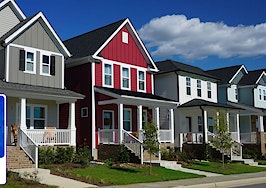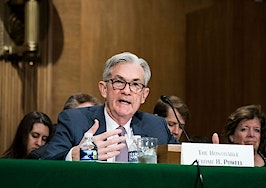In these times, double down — on your skills, on your knowledge, on you. Join us August 8-10 at Inman Connect Las Vegas to lean into the shift and learn from the best. Get your ticket now for the best price.
Homebuyer demand for mortgages picked up last week as rates declined for the second week in a row, even as lenders continue to tighten standards to levels not seen in a decade, according to two reports released this week by the Mortgage Bankers Association (MBA).
The MBA’s Weekly Mortgage Applications Survey shows demand for purchase loans was up by a seasonally adjusted 8 percent last week when compared to the week before but down 27 percent compared to the same time a year ago. Requests to refinance were also up 6 percent week over week, but down 41 percent from a year ago.

Joel Kan
“Rates that are still more than a percentage point higher than a year ago, and low for-sale inventory continue to constrain homebuying activity in many markets,” MBA Deputy Chief Economist Joel Kan said in a statement. “The average loan size on a purchase loan decreased for the third straight week, as we continue to see more first-time homebuyer activity in the purchase market.”
Another MBA report analyzing data from ICE Mortgage Technology found lenders tightened standards for the third month in a row in May, with mortgage credit availability falling to the lowest level since January 2013.

The Mortgage Credit Availability Index (MCAI), a measure of lending standards that uses March 2012 as a benchmark of 100, fell by 3.1 percent to 96.5 in May.
Kan said lending standards are tightening because of industry consolidation and reduced capacity as a result of the tougher market, with lenders pulling back on offering loans to borrowers seeking higher loan-to-value (LTV) mortgages and lower credit score loans. Lenders offering government-backed FHA, VA and USDA loans tightened standards by 3.8 percent in May, the report concludes.
“In a market where a significant share of demand is expected to come from first-time homebuyers, the depressed supply of government credit is particularly significant,” Kan said.

Fannie Mae’s National Housing Survey shows consumers are aware that lenders are tightening, with 55 percent of those surveyed in May saying they think it would be difficult to get a mortgage, up from 45 percent a year ago.
Affordability hurdles, including high home prices and mortgage rates, “remain top of mind for consumers, most of whom continue to tell us that it’s a bad time to buy a home but a good time to sell one,” Fannie Mae Deputy Chief Economist Mark Palim said in an announcement summarizing the latest survey results.

Mark Palim
“Consumers also indicated that they don’t expect these affordability constraints to improve in the near future, with significant majorities thinking that both home prices and mortgage rates will either increase or remain the same over the next year,” Palim said. “Notably, the same factors impacting affordability may also be affecting the perceived ease of getting a mortgage. This was particularly true among renters: 81 percent believe it would be difficult to get a mortgage today, matching a survey high.”
The Optimal Blue Mortgage Market Indices show borrowers were locking 30-year fixed-rate conforming mortgages at rates averaging 6.70 percent Tuesday, down from a 2023 high of 6.85 percent seen on May 26.
For the week ending June 9, the MBA reported average rates for the following types of loans:
- For 30-year fixed-rate conforming mortgages (loan balances of $726,200 or less), rates averaged 6.77 percent, down from 6.81 percent the week before. With points decreasing to 0.65 from 0.66 (including the origination fee) for 80 percent loan-to-value ratio (LTV) loans, the effective rate also decreased.
- Rates for 30-year fixed-rate jumbo mortgages (loan balances greater than $726,200) averaged 6.79 percent, up from 6.74 percent the week before. Although points decreased to 0.5 from 0.56 (including the origination fee) for 80 percent LTV loans, the effective rate also increased.
- For 30-year fixed-rate FHA mortgages, rates averaged 6.70 percent, down from 6.73 percent the week before. With points decreasing to 1.14 from 1.15 (including the origination fee) for 80 percent LTV loans, the effective rate also decreased.
- Rates for 15-year fixed-rate mortgages averaged 6.25 percent, unchanged from the week before. But with points increasing to 1.05 from 0.62 (including the origination fee) for 80 percent LTV loans, the effective rate increased.
- For 5/1 adjustable-rate mortgages (ARMs), rates averaged 5.90 percent, down from 5.93 percent the week before. But with points increasing to 1.17 from 0.96 (including the origination fee) for 80 percent LTV loans, the effective rate increased.
Get Inman’s Mortgage Brief Newsletter delivered right to your inbox. A weekly roundup of all the biggest news in the world of mortgages and closings delivered every Wednesday. Click here to subscribe.












